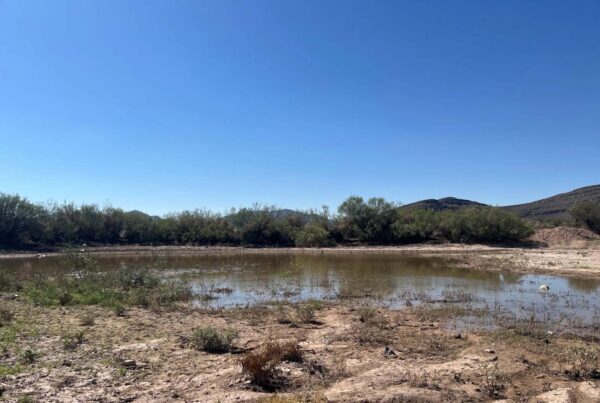There’s not much new about Fort Martin Scott itself. It was founded near Fredericksburg back in 1848 as part of a string of military installations to protect frontier settlements from attacks by Comanche and other Native peoples.
What is new, however, is that the fort is now the Texas Historical Commission’s 39th historic site, ensuring its long-term preservation. The commission officially took ownership of the site on June 1, taking over for the City of Fredericksburg.
Shannon Smith, the site’s director, spoke to the Texas Standard about the fort’s backstory.
This transcript has been edited lightly for clarity:
Texas Standard: Can you tell us a little bit about what the fort was like during its heyday?
Shannon Smith: It was established in December of 1848. It’s one of the very first U.S. military outposts on the Texas frontier. We’re located about two miles southeast of Fredericksburg. And the fort was really part of this broader network that was built to protect settlers, travelers through westward expansion.
Other notable forts include Fort McKavett, Fort Griffin, Fort Lancaster, even Fort Worth. So all of these forts’ main purpose was to create a buffer against potential conflicts with Native American tribes like the Comanches who really dominated the region before this influx of European settlers.
So you asked what life was like. We do have this little snippet from one of the doctors that was on site, and he described, Dr. Ebenezer Swift, sort of the fort’s construction was very basic, and these conditions would often have been pretty harsh.
So he described the hospital as just little more than rudimentary shelter with a covered tarpaulin. And it was just really crudely covered by woolen blankets. So lots of character building, I am sure.
Hard to imagine going in for some sort of serious procedure in 1850 under the tarpaulin that Dr. Ebenezer was going to administer some sort of medicinal aid. The fort was only in use, though, from 1848 to 1853. That seems like kind of a short run. Why was it abandoned so quickly?
I mean, it’s really just westward expansion. People kept moving west faster than the fort could really keep up with. With those shifting military priorities, budget constraints, that really helped lead the U.S. Army to then decommission the fort.
» GET MORE NEWS FROM AROUND THE STATE: Sign up for Texas Standard’s weekly newsletters
And so from 1853, after that decommission, was it used or inhabited at all after that initial five-year run of operations?
Yes, I’m glad you asked that. So like we said, the Army closed the fort in 1853. It was officially abandoned in 1866. And much like our forts in Texas, when they’re abandoned, a lot of the local residents come in and they’ll scavenge materials. So that exact same thing happened at Fort Martin Scott not too long after.
In 1870, the 640-acre property was sold to Johann Wolfgang Braeutigam. So then the Braeutigam family moves in. They repurpose all of the remaining fort structures for their farm and incorporated things like the stone guardhouse became part of their home.
They converted some of the officers’ quarters; one of them was turned into a saloon known as Braeutigam Garden. And they maintained ownership of the property for over 90 years until 1959, when it was sold to the city of Fredericksburg.
Why is this designation by the historical commission that this is an official state historic site significant for the future of Fort Martin Scott?
Largely because of resources and what we can bring to this fort. One thing that we’re looking at way ahead this coming summer is being able to have Fort Martin Scott really host like a kind of family camp but will pull in Fort McKavett, Fort Griffin, Fort Lancaster, those already established Texas Historical Commission sites.
And we can really use the agency’s resources to really revamp the site and come at it from several different angles and tell a much more inclusive story of the entire time period that the property really was occupied.
I understand that while the historical commission was acquiring the land, you were involved with that process and then you asked if you could stick around Fort Martin Scott. How come?
Well, I’ll be frank. I’m from Houston, and growing up in Houston, we really didn’t learn a lot of the history about the Texas Hill Country. And the more that I dove into this project and I learned how rich and deeply connected to the rest of the state it was, I really drank the punch. I got kind of obsessed with it.
I was really just enamored with the story and excited to look at it from a different perspective, especially the fort military story. I was just excited to tell that from the eyes of a woman.












